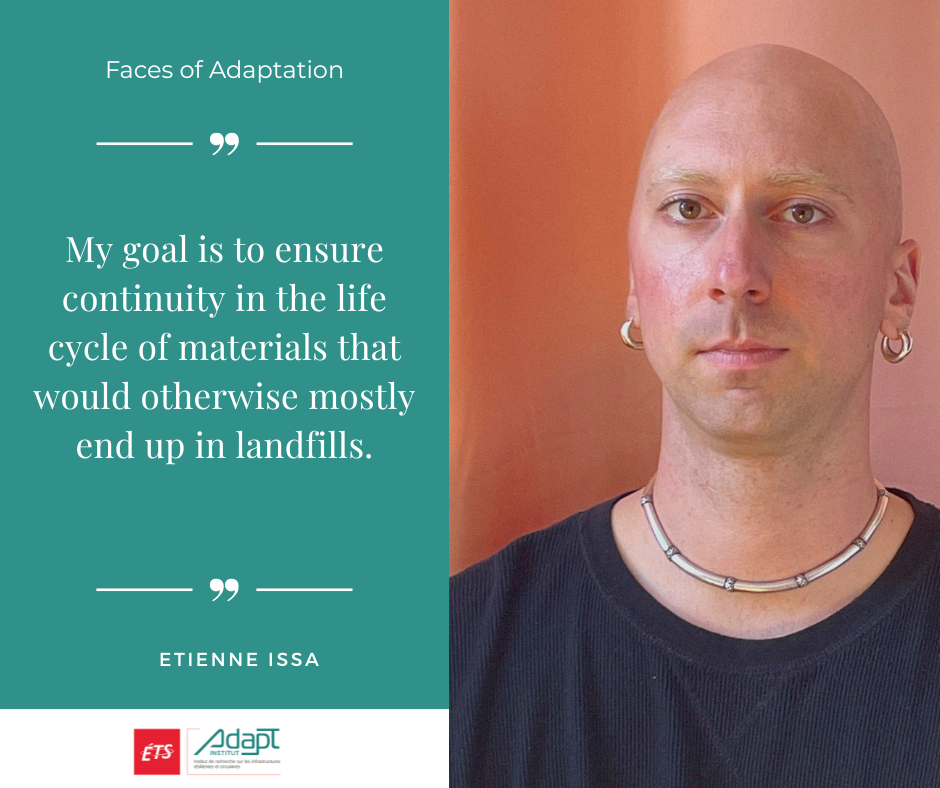Giving Construction Waste a Second Life

Étienne Issa, a student at the Institut de recherche en biologie végétale at Université de Montréal, is one of the recipients of the scholarship awarded by AdapT – Institute for Research on Resilient and Circular Infrastructure. Here’s how they envision the research project they have undertaken.
What will this scholarship allow you to accomplish?
It will help me continue working toward my goal of repurposing construction waste — a goal I’ve been pursuing for several years. My research project touches on multiple aspects of social and ecological justice, as reflected in its title: Fungal Links: Mycovalorization for Circular Cities, Resilient Communities, and Regenerative Materials.
Briefly explain your research project.
This is an applied research project that explores new possibilities for fungal mycelium-based biomaterials created with construction waste. I collect leftover material from containers — mainly crushed concrete, brick, and stone — and incorporate these aggregates into a substrate made primarily of wood sawdust. I then introduce a mycelium culture to create typological prototypes with structural properties.
My goal is to ensure continuity in the life cycle of materials that would otherwise largely end up in landfills. These materials could then be used in construction projects promoting climate-sensitive architecture.
Why is your research important in the context of climate change?
My project fits within the framework of the circular economy, which aims to recover and reuse materials from sites and buildings. Extracting raw materials disrupts and threatens landscapes and ecosystems through large-scale, resource-intensive practices, emitting considerable greenhouse gases and contributing to soil and water pollution.
The aim of my research is to help reduce or halt these extractive processes and their harmful impacts.
What led you to become interested in these issues?
With a background in architecture, I worked at several firms and with associations in Montreal, Berlin, and Paris before shifting toward a research focus combining architecture and the environment. I later concentrated on materials as a starting point to address an ecological issue that is structural within the field of architecture.
By developing new biomaterials, I hope to spark a material and sociocultural paradigm shift.
What are the potential positive impacts of your research for society?
One of my goals in this applied research project is to make construction materials accessible to the population that respond to today’s environmental challenges, and to offer a “recipe” that can be adapted to community needs.
This could, I believe, support self-building efforts through a form of collective autonomy — empowering people to produce and supply their own materials through waste valorization.
Lastly, the project fits within a broader vision of cities as living landscapes to be nourished and maintained, where humans and other living organisms coexist.
